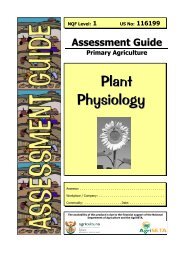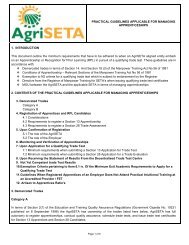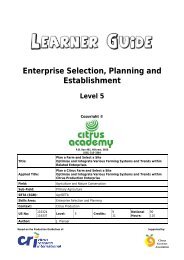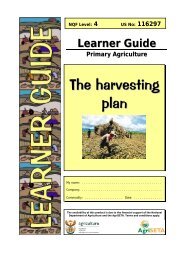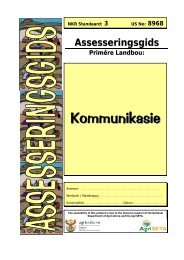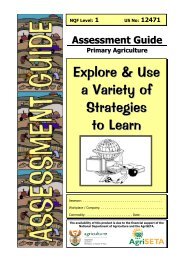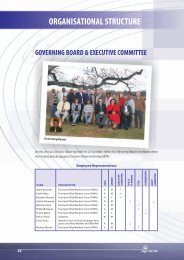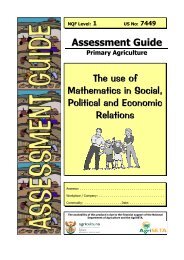Evaluate Basic External Animal Anatomy and Morphology - AgriSETA
Evaluate Basic External Animal Anatomy and Morphology - AgriSETA
Evaluate Basic External Animal Anatomy and Morphology - AgriSETA
- No tags were found...
Create successful ePaper yourself
Turn your PDF publications into a flip-book with our unique Google optimized e-Paper software.
<strong>Evaluate</strong> <strong>Basic</strong> <strong>External</strong> <strong>Animal</strong> <strong>Anatomy</strong> <strong>and</strong> <strong>Morphology</strong>Primary Agriculture NQF Level 1 Unit St<strong>and</strong>ard No: 11617334The locust breathes through ten pairs of spiracles: two pairs on thethorax <strong>and</strong> eight pairs on the abdomen. From these openings acomplicated system of air tubes (tracheae) extends throughout thebody. If you observe a locust at rest, you will see the lower part of theabdomen moving up <strong>and</strong> down. In other insects like the honeybees, itis also very visible. These movements pump air in <strong>and</strong> out of thespiracles.Life cycle of the locustConceptIdentifying the different basicanatomical parts of a locust.Identifying by means of external partsthe class to which the locust belongs.Identifying <strong>and</strong> naming the externalvisible divisions or parts of a locust.Identifying gross abnormalities in theexternal parts of locust.Giving reasons for the various steps inthe lifecycle <strong>and</strong> identifying thevulnerability of the locust in thedifferent stages.I underst<strong>and</strong>this conceptQuestions that I still wouldlike to askVersion: 01 Version Date: July 2006



